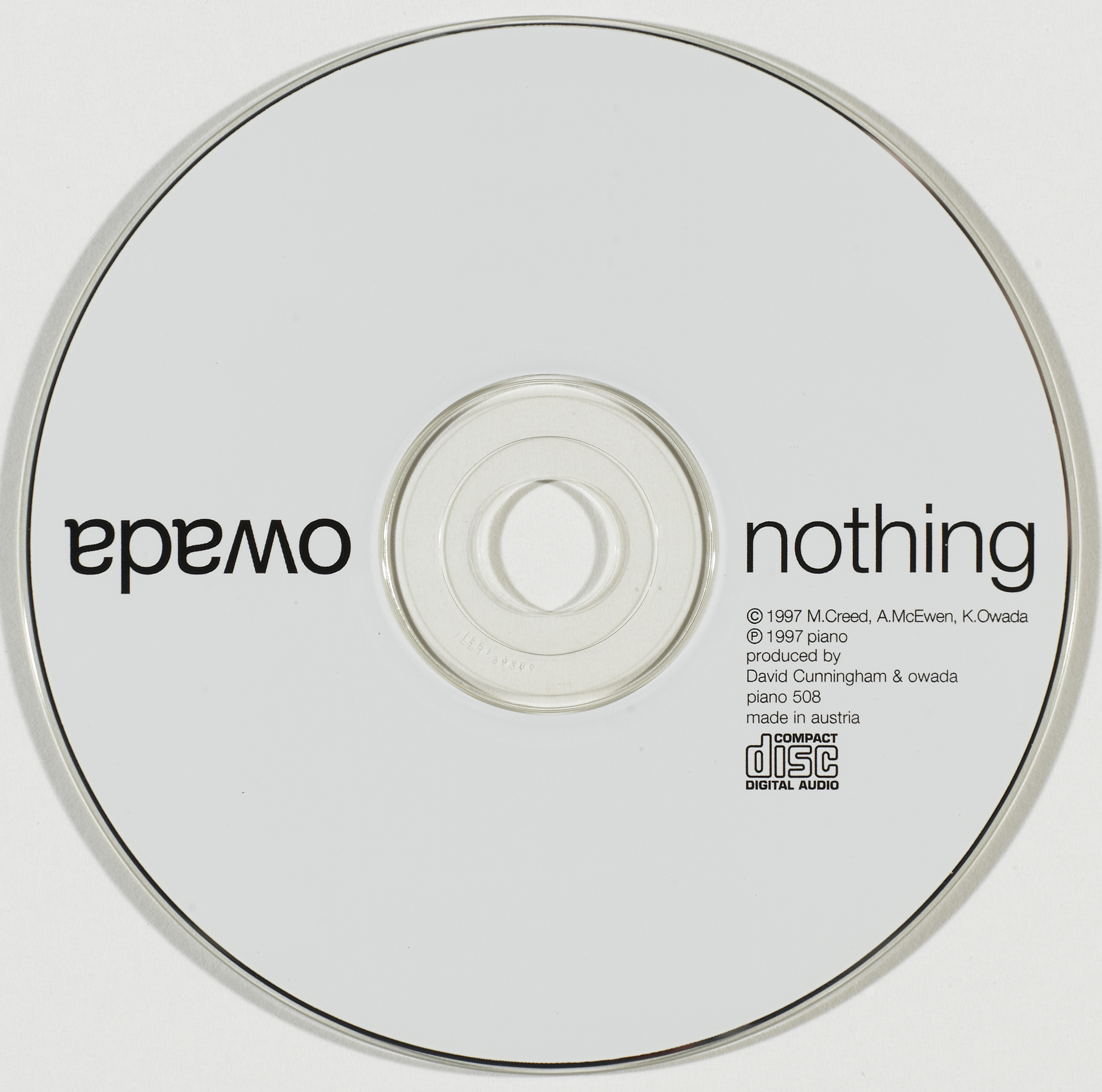Nothing, 1997
1 CD, stereo sound, 36’24’’
Piano Edition, 1997
Martin Creed's work follows the example of the conceptual and minimalist art of the 1960's and 70's, such as that of Sol Lewitt. When creating a work, Creed avoids taking an aesthetic direction. His approach relies on the question of the consistencies within a work of art and the relationships it forms with those around it. His works take on several shapes, all the while remaining restrained. The artist often uses materials available at the place of exhibition: the air in Work No. 200, half the air in a given space (1998), the light in Work No. 227, The Lights Going On and Off (2000), which won him the Turner Prize in 2001, as well as walls, doors and sound. To describe his reasoning, Martin Creed likes to quote Michelangelo, saying that a sculpture is already present in a block of marble. It's just a question of getting it out.
Martin Creed considers sound and music a continuance of his approach to visual arts. In this principle of complementarity, his auditory works often stem from visual works and vice versa, for example in I Like Things, or Everything is Going to be Alright (sic). He also designs auditory installations, such as Work No. 189. thirty-nine metronomes beating time. one at every speed (1998) in which 39 metronomes, placed on the floor, each beat a different time. In 1994, he formed a band, Owada, with two friends. Martin Creed was the singer and guitarist, Adam McEwethe percussionist and Keiko Owada the bass player and backing vocal. He had already written and composed pieces before forming the band, but Owada allowed him to perform them. The band soon split, as it was too far removed from Creed's artistic aspirations, who continued to develop his own musical projects as singer and guitarist in the context of his exhibitions.
In 1997, Owada produced its first album, Nothing, under the label of composer David Cunningham. Conceived as a minimalist work, it consisted of 23 songs, composed and written by Creed. The titles of the pieces also revealed the lyrics of the song (1,2,3,4), its characteristics (Short g, (0'06") or the context of recording (30 seconds with the lights off). In the same vein, the piece X consists of the letters of the alphabet from A to Z and 1-100 of the list of numbers sung in order. In Circle, the artist evokes the world of art and refers to artists who are distinguished within the field of conceptual art.
The album is a mixture between dada and pop music. The lyrics revolve around repetition, counting and reciting, but reduced to the strict minimum: few notes and no superfluous words. Creed wanted the guitar to be as pure as possible, and chose not to use reverb or distortion. Through this neutral approach, the sound is finer, purer. It is that absence of musical aestheticism that gives the album its name.
Priscilia Marques
Translation Jasper Schelstraete
